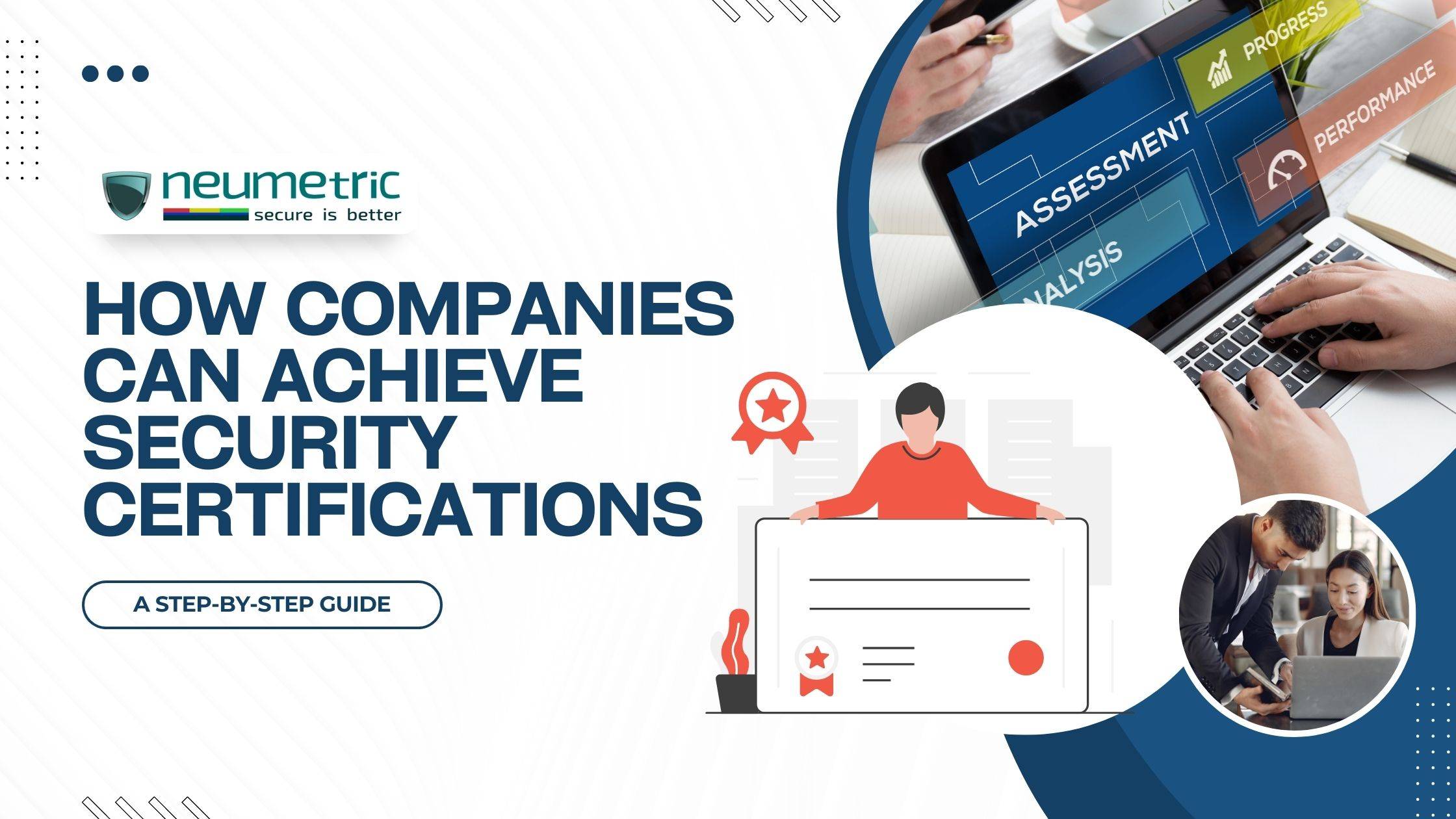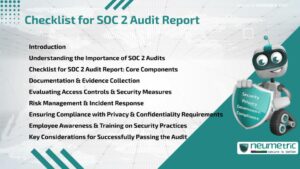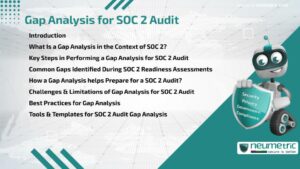Table of Contents
ToggleHow should Companies achieve Security Certifications?
Introduction
Security Certifications are vital for companies, fostering trust & credibility in today’s digital landscape. They validate an organisation’s commitment to robust security practices & protection of sensitive information, offering significant benefits for both companies & customers. In this Journal, we provide a step-by-step guide on achieving Security Certifications.
Navigating the Certification process can be complex, but our aim is to equip companies of all sizes with practical insights to streamline their efforts effectively. Obtaining Security Certifications showcases a company’s dedication to data security, compliance & risk mitigation. Customers find reassurance in these Certifications, knowing their sensitive information is secure.
Throughout the Journal, we cover understanding Certification types, setting goals, conducting gap analysis, establishing robust security management systems, engaging with auditors & fostering a culture of continuous improvement. By following our guide, companies can navigate the Certification journey effectively, enhancing their security posture & gaining a competitive edge.
Understanding Security Certifications
Security Certifications are formal validations that assess an organisation’s adherence to specific Security Standards, Frameworks or Regulations. They provide an objective measure of an organisation’s security controls, practices & processes. Security Certifications serve as evidence of a company’s commitment to safeguarding information assets & mitigating risks.
There are several widely recognized Security Certifications that companies can pursue based on their industry & specific requirements. Examples include International Organization for Standardisation 27001 [ISO 27001] for Information Security Management System [ISMS], System and Organization Controls 2 [SOC 2], Payment Card Industry Data Security Standard [PCI DSS] & Health Insurance Portability & Accountability Act [HIPAA]. Each Certification focuses on different aspects of information security & compliance.
It is crucial for companies to select certifications that are relevant to their industry & align with customer requirements. By understanding the specific compliance needs & regulatory landscape of their sector, organisations can choose certifications that address the unique security challenges they face. This ensures that the certifications obtained hold value & resonate with stakeholders.
Identifying Certification Goals & Requirements
- Assessing company needs & objectives: The first step in achieving Security Certifications is to assess the organisation’s needs & objectives. Determine the reasons for pursuing certifications, such as regulatory compliance, customer demands or competitive advantages. This assessment helps define the scope & purpose of the certification journey.
- Researching industry-specific compliance requirements: Research industry-specific compliance requirements & understand the security standards & frameworks relevant to your sector. Identify the specific regulations, laws or guidelines that apply to your organisation. This research helps to establish a baseline for the necessary security controls & practices required to achieve certifications.
- Mapping out specific Certifications needed: Based on the assessment of needs, objectives & industry requirements, map out the specific certifications that align with your desired goals. Consider the resources, timeframes & level of effort required for each certification. Develop a roadmap for obtaining the certifications in a logical & achievable manner.
Conducting a Gap Analysis
Conduct a comprehensive evaluation of the company’s current security practices, controls & processes. This evaluation involves reviewing existing security policies, procedures, infrastructure & technologies. Identify strengths & weaknesses to determine the gaps that need to be addressed to meet certification requirements.
Based on the gap analysis, identify specific areas that require improvement to meet the Certification requirements. This may include enhancing technical controls, strengthening access management, implementing encryption measures or improving incident response capabilities. Prioritise these areas based on their impact on security & certification readiness.
Develop an Action Plan that outlines the steps & milestones required to address the identified gaps & enhance security measures. Assign responsibilities, set deadlines & allocate resources to ensure effective execution of the plan. Regularly monitor progress & make adjustments as needed to stay on track.
Establishing a Security Management System
- Developing policies & procedures: Develop comprehensive security policies & procedures that align with the certification requirements. These policies should cover areas such as access control, data classification, incident response, business continuity & employee awareness. Clearly define roles, responsibilities & accountability for implementing & adhering to these policies.
- Documenting security controls & guidelines: Document the security controls, processes & guidelines that are necessary to achieve & maintain the desired certifications. This documentation serves as evidence of the organisation’s commitment to security & helps ensure consistent implementation across the company. Include details such as control objectives, implementation guidelines & monitoring mechanisms.
- Implementing necessary organisational changes: Implement the organisational changes required to support the Security Management System. This may involve restructuring teams, appointing dedicated security personnel, establishing reporting mechanisms & integrating security into the company’s culture. Foster collaboration & communication among different departments to create a unified approach to security.
Training & Awareness Programs
- Providing Security Awareness Training to employees at all levels Employees are a critical component of an organisation’s security posture. It is essential to provide comprehensive Security Awareness Training to employees at all levels. Emphasise the importance of their role in maintaining the security of sensitive information. Train employees on recognizing & reporting potential security incidents, phishing attempts & other cyber threats. Here are some best practices for security awareness training:
- Full Participation: Include everyone in the Security Awareness Program, from executives to janitorial staff, to promote buy-in & ensure that everyone is on the same page.
- Open Communication: Keep employees informed about the value of cybersecurity & the progress of security initiatives.
- Baseline Assessments: Conduct baseline assessments to identify areas where employees need more training.
- Ongoing Assessments & Training: Provide ongoing assessments & training to keep employees up-to-date on the latest security threats & best practices.
- Linking Assessments with Training: Link assessments with training to reinforce learning & ensure that employees understand the importance of security.
- Reinforcement: Reinforce Security Awareness Training through posters, newsletters & other communication channels.
- Tracking & Reports: Track employee progress & provide reports to management to demonstrate the effectiveness of the Security Awareness Program.
- Educating staff on security policies & procedures: Ensure that all employees understand & comply with the organisation’s security policies & procedures. Offer specialised training for employees handling sensitive data or performing critical security-related tasks. Regularly communicate updates to security policies & provide refresher training sessions to reinforce good security practices.
- Encouraging a culture of security awareness: Foster a culture of security awareness & accountability throughout the organisation. Encourage employees to actively participate in security initiatives, report vulnerabilities & suggest improvements. Recognize & reward individuals or teams that demonstrate exemplary security practices. Regularly communicate the importance of Security Certifications & their impact on the company’s reputation & success.
Conducting Risk Assessments & Audits
Conduct regular Risk Assessments to identify vulnerabilities, threats & risks to the organisation’s information assets. Assess both internal & external factors that may impact the security posture. Identify critical assets, evaluate potential impacts & prioritise risks based on likelihood & severity. Develop risk mitigation strategies & controls to address identified risks.
Implement appropriate controls to mitigate the identified risks. This may include technical controls such as firewalls, Intrusion Detection Systems [IDS], encryption & access controls. Additionally, implement administrative controls such as security policies, incident response procedures & employee awareness programs. Regularly monitor & evaluate the effectiveness of these controls.
Conduct regular internal audits to assess compliance with security policies, procedures & controls. These audits help identify areas of non-compliance, weaknesses in the security management system & potential gaps in meeting Certification requirements. Correct any issues or deficiencies identified during the audits & continuously improve security practices based on audit findings.
Engaging Third-Party Auditors
- Selecting reputable Certification bodies or auditors: Engage with reputable Certification bodies or auditors who are accredited to conduct Certification audits. Research their expertise, experience & reputation in the field of Information Security. Ensure that they have a thorough understanding of the specific certification requirements relevant to your organisation. Request references & evaluate their track record in delivering reliable & accurate assessments.
- Preparing for the Certification audit process: Prepare for the certification audit by reviewing the Certification requirements, documentation & controls. Conduct internal mock audits to assess readiness & identify any potential gaps or areas of improvement. Ensure that all necessary documentation is organised, up to date & easily accessible for the auditors. Collaborate with internal teams & stakeholders to ensure a smooth audit process.
- Collaborating with auditors to demonstrate compliance: During the Certification Audit, collaborate closely with the auditors to demonstrate compliance with the certification requirements. Provide accurate & complete documentation, evidence & explanations as requested. Address any findings or recommendations provided by the auditors promptly & effectively. Maintain open communication with the auditors throughout the process to clarify any queries or concerns.
Remediation & Continual Improvement
Address any non-compliance issues identified during audits or assessments promptly & effectively. Develop Corrective Action Plan [CAP] to rectify deficiencies, strengthen controls & improve security practices. Ensure that Corrective Actions are implemented in a timely manner & monitor their effectiveness. Conduct follow-up audits or assessments to validate the effectiveness of the remediation efforts.
Implement the necessary Corrective Actions & Opportunities for Improvement [OFI] based on the findings from audits, assessments & incident response activities. This may involve updating policies & procedures, enhancing technical controls, providing additional training or adjusting organisational structures. Continuously monitor the effectiveness of these actions & make adjustments as necessary.
Foster a culture of continuous improvement in the organisation’s security practices. Encourage employees to identify & report potential improvements or areas for enhancement. Regularly evaluate the effectiveness of security controls, processes & procedures. Stay informed about emerging security threats, industry best practices & evolving certification requirements. Continually adapt & enhance the Security Management System to maintain compliance & mitigate new risks.
Conclusion
In conclusion, Security certifications play a vital role in today’s business landscape, providing companies with the opportunity to build trust, credibility & a competitive edge. This Journal has highlighted the step-by-step approach for achieving security certifications, from understanding their purpose to conducting risk assessments, engaging auditors & embracing continual improvement.
By investing in obtaining certifications, companies can enhance their security posture, demonstrate their commitment to safeguarding sensitive information & meet industry-specific compliance requirements. It is crucial for organisations to recognize the importance of security certifications & proactively pursue them to gain a competitive advantage in the market.
FAQs
What are the top 5 security credentials?
The top 5 security credentials include Certified Information Systems Security Professional [CISSP], Certified Information Security Manager [CISM], Certified Ethical Hacker [CEH], CompTIA Security+ & Certified Cloud Security Professional [CCSP].
How many security certificates are there?
The number of security certificates available is vast & continually growing. There are numerous certifications specific to various domains of information security, including network security, application security, cloud security & compliance-related certifications. It is important to select certifications that align with industry standards & organisational needs.
What organisation offers a variety of Security Certifications that are focused?
Various organisations offer a variety of Security Certifications tailored to specific domains. For example, the International Information System Security Certification Consortium [ISC]² offers Certifications like Certified Information Systems Security Professional [CISSP] & Certified Cloud Security Professional [CCSP]. The Information Systems Audit & Control Association [ISACA] offers Certifications like Certified Information Security Manager [CISM] & Certified in Risk & Information Systems Control [CRISC].
How important are Security Certifications?
Security certifications are of utmost importance for companies as they demonstrate a commitment to maintaining a strong security posture. Certifications enhance customer trust, build credibility & differentiate companies from their competitors. Security Certifications also help organisations comply with industry regulations, protect sensitive data & mitigate risks associated with cyber threats.





